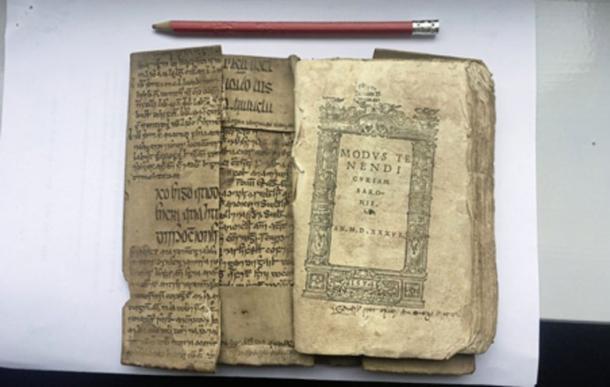The piece of manuscript in the binding was written in Medieval Gaelic and is a translation of Islamic medical work. According to the About Islam website, it is a “fragment of a translation into Irish of the ‘Canon of Medicine’ medical encyclopedia.” The page has entries on the nature of the jaws, back, and how the nose functions.

Ibn Sīna (Avicenna). ( Public Domain )
The Canon of Medicine is in five volumes and provides a complete overview of Islamic medical scholarship and even several hundred medicines. This work was the “standard medical text in the Islamic world and across Europe, and for more than six centuries the most respected medical textbook in medieval Europe ,” reports The Guardian .
The Genius of Persian Polymath Ibn Sīna
This immense medical work was written by the famous Persian polymath Ibn Sīna (980-1053 AD), who is known as Avicenna in the West. He was a self-educated genius from Central Asia who flourished in the Islamic Golden Age, a period when Muslims studied the works of Classical Greeks and others and made enormous cultural and intellectual advances.
Ibn Sīna wrote many major works on philosophy, logic, theology, astronomy, and science, which decisively influenced, not only the Muslim world but also Europe, as it slowly emerged from the Dark Ages . His ideas on medicine and his insistence on an evidence-based approach to healthcare have been enormously influential to this day.
The discovery of a translated page credited to Ibn Sīna’s work in an Irish book is a testament to the immense prestige of Islamic learning in 15th century Europe. It shows that medicine from the Muslim world was dominant in European societies at the time. Most likely the page was from an encyclopedia that was used to train doctors in Ireland.
Irish Medieval Culture
Prof Ó Macháin states that almost one in four works written in Gaelic at the time were on medical subjects. Irish doctors often went abroad to train and the work by the Persian author was probably brought back from the continent. In the 15th century, there was a class of hereditary Irish physicians whose skills were very respected and it seemed that this was in part because of their learning in Muslim medicine.
During that time, Gaelic learning and literature was being revived by powerful aristocratic patrons. The country was only nominally subject to the English crown, whose rule was confined to Dublin and its neighborhood, which was known as the ‘Pale’. Gaelic culture continued to flourish until the English victory in the Nine Years Wars (1592-1601), which ended in the colonization of much of Ireland.

The discovery of the sheet has established a link between Ireland the Muslim world. The find is also demonstrating that Ireland was much more culturally advanced than previously thought. It proves once again that Europe was indebted to Islamic science , medicine, and learning in the Middle Ages.



No comments:
Post a Comment